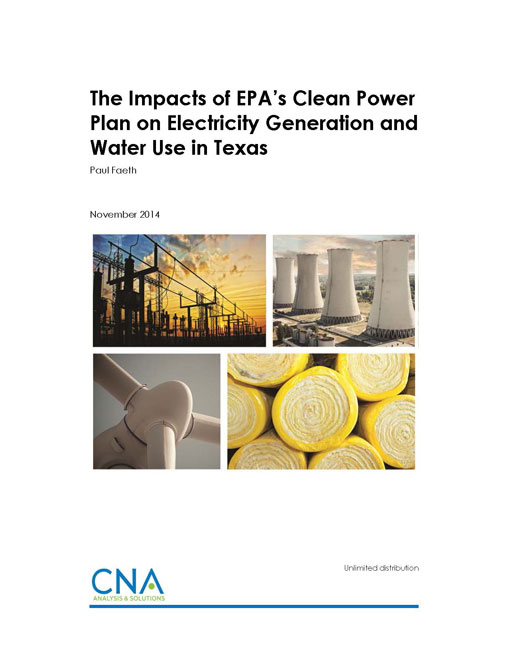To determine how Texas could be affected by the U.S. Environmental Protection Agency’s (EPA’s) Clean Power Plan (CPP), we applied CNA’s Electricity-Water-Climate power sector model to evaluate the potential impacts. We find that under the CPP, the state will save water and reduce levels of conventional air pollutants. In addition, the state will be able to meet the policy’s targets with modest incremental effort even though electricity demand is expected to increase by 25 percent.
We summarize our main findings:
- Under the CPP, water consumption by the Texas power sector could be cut by more than 20 percent compared with water consumed in 2012. This is about 88,000 acre-feet per year.
- The Texas power sector is already moving to cut the carbon dioxide (CO2) intensity of its economy—the objective of the CPP—by shifting away from coal and toward natural gas and wind power.
- The demand-side energy efficiency gains proposed by EPA would reduce the need for new power generating capacity in Texas. As a result, Texas would avoid increased water use and would significantly reduce conventional air pollution and CO2 emissions.
- Under the CPP, the cost per unit of electricity produced would increase by 5 percent, but total system costs would decrease by 2 percent.
Distribution unlimited.
Details
- Pages: 34
- Document Number: IRM-2014-U-009083
- Publication Date: 11/1/2014
